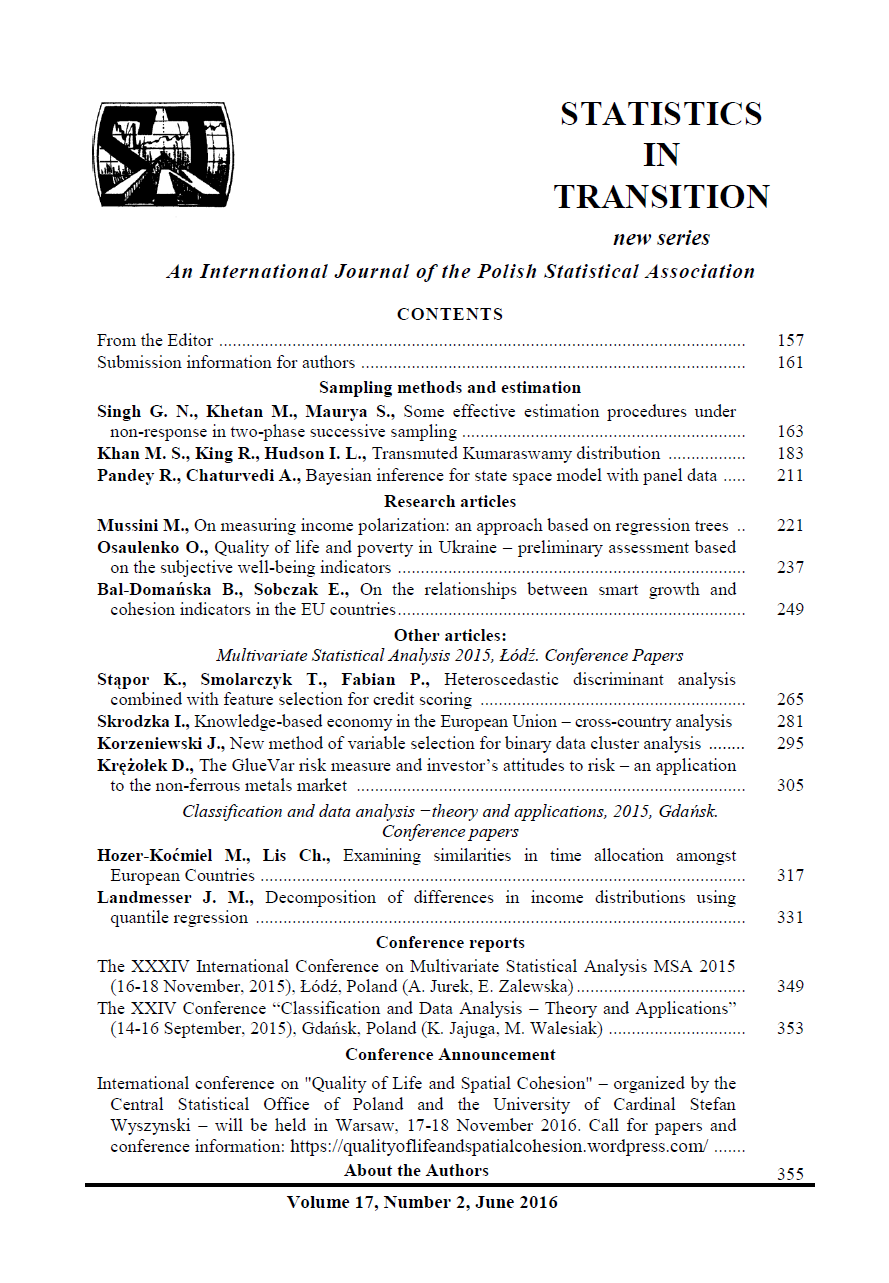ARTICLE
ABSTRACT
The knowledge-based economy is an economy where knowledge is created, acquired, transmitted and used effectively by businesses, organizations, individuals and communities. It is not narrowly focused on the industries of advanced technology or ICT, but provides a framework for analysing the range of policy options in education, information infrastructure and systems of innovation, which could help contribute to the knowledge economy. The aim of the paper is to analyse spatial differences in the level of development of the knowledge-based economy in the European Union countries. The study uses a soft modelling method, which enables the estimation of a synthetic measure of KBE as well as the arrangement and classification of the UE-27 countries into typological groups. The research covers the years 2000 and 2013
KEYWORDS
knowledge-based economy, knowledge assessment methodology, economic development, soft modelling.
REFERENCES
APEC Economic Committee, (2000). Towards Knowledge-based Economies in APEC.
BECLA, A., (2010). Wady i zalety metody KAM (Knowledge Assessment Methodology) służącej do identyfikacji poziomu zaawansowania gospodarki opartej na wiedzy [Advantages and disadvantages of KAM method (Knowledge Assessment Methodology) used for the identification of the level of advancement of the knowledge-based economy], In: Prace Naukowe UE we Wrocławiu, Wrocław: Wydawnictwo UE we Wrocławiu, No. 139, pp. 56–70.
CHEN, D. H. C., DAHLMAN, C. J., (2005). The Knowledge Economy, the KAM Methodology and World Bank Operations [online].Washington: World Bank Institute, D.C. 20433, http://siteresources.worldbank.org/INTUNIKAM/Resources/2012.pdf.
DWORAK, E., (2010). Analysis of knowledge-based economy impact on economic development in the European Union countries, Comparative Economic Research. Central and Eastern Europe Vol. 13, No. 4, pp. 5–25.
OECD, (1996). The Knowledge-based Economy. Paris.
OECD, World Bank, (2001). Korea and Knowledge-based Economy. Making the Transition. Paris.
NOWAK, E., (1990). Metody taksonomiczne w klasyfikacji obiektów społeczno gospodarczych [Taxonomic methods in the classification of socio-economic subjects], Warsaw: PWE.
PERŁO, D., (2004). Źródła finansowania rozwoju regionalnego [Sources of funding for regional development], Białystok: Wydawnictwo Wyższej Szkoły Ekonomicznej w Białymstoku.
PIECH, K., (2009). Wiedza i innowacje w rozwoju gospodarczym: w kierunku pomiaru i współczesnej roli państwa [Knowledge and innovation in economic development: towards the measurement and contemporary role of the state],Warsaw: Instytut Wiedzy i Innowacji.
ROGOWSKI, J., (1990). Modele miękkie. Teoria i zastosowanie w badaniach ekonomicznych [Soft models. Theory and application in economic studies],Białystok: Wydawnictwo Filii UW w Białymstoku.
SKRODZKA, I., (2015). Kapitał ludzki polskich województw – koncepcja pomiaru [Human capital of Polish voivodships - the concept of measurement],Białystok: Wydawnictwo UwB.
WOLD, H., (1980). Soft Modelling: Intermediate between Traditional Model Building and Data Analysis, Banach Centre Publication 6, Mathematical Statistics
